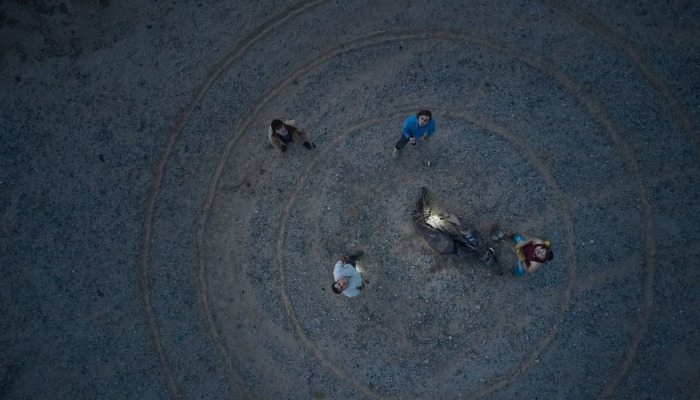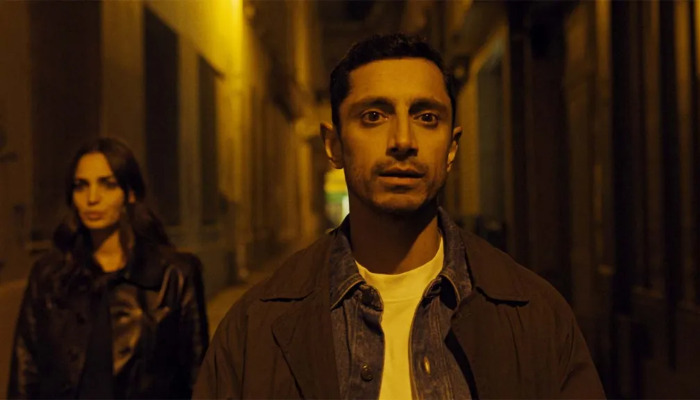Film Review: THE STORY OF SOUTHERN ISLET: A Detailed and Dense Slice of Malaysian Folk Horror [Locarno 2021]
The Story of Southern Islet Review
The Story of Southern Islet (2020) Film Review from the 74th Annual Locarno Film Festival, a movie directed by Keat Aun Chong, starring Jojo Goh, Season Chee, Hong Herr Wong, Wei Hern Teoh, Ling Tang, Pearlly Chua, Kok Hin Kuan, and Mei-Sim Hoon.
Cinema is a memoir set to motion through which we relive and re-examine our histories. Folk horror is the lens we then apply to it to bring forth fantastical analyses. Combined, they conjure up rich tapestries with haunting allures that make us more attune to a time, a place, and our very beings. Keat Aun Chong’s The Story of Southern Islet is a detailed and dense portrait of such a practice, as he uses Malaysian folklore to better make sense of the mysteries of his childhood.
Set in the village of Kerat in the state of Kedah, which shares a border with Thailand on the Malaysian Peninsula, Yan and Cheong (Jojo Goh and Season Chee, respectively) struggle to make a living by fishing shrimp and selling other items at their local market. The sociopolitical clashes within their region during the 1980s is mirrored in their own relationship, as Cheong’s fastidiousness to Shamanism and folk religion leaves Yan feeling off-put and increasingly skeptic. While he thinks keeping a shrine to the local deity is a safety precaution, she sees it as an eyesore and a waste of time.
Following the death of a neighbor immediately after a heated row, Cheong comes down with an illness that refuses to ease up. Feverish dysentery and fatigue plague him, but so do incredibly bizarre events … like vomiting up rusty nails in a bloody bile. Cheong is convinced that he’s been placed under a curse by the local deity, but Yan is certain in a more logical explanation. Although that’s becoming hard to prove, as the local hospital writes off Cheong’s ailments as only food poisoning and, for fear of losing their medical reputation, refuses to entertain the notion of bloody vomit nails.
Yan has already been run ragged as she attempts to care for a bedridden husband while also manages their market storefront and cares for their two young boys (Hong Herr Wong and Wei Hern Teoh, one of which most likely playing a Keat Aun Chong stand-in), which forces her to seek out alternative methods for a cure – much to the chagrin of local shamans, who are already wary of her due to her reputation of professed skepticism. To save her husband Yan must go on her own spiritual journey and surpass her deepest doubts, lest Cheong remained sickly (and maybe even cursed) for the rest of his life.
The Story of Southern Islet showcases the beauty of small-town existence as well as the terror of the unknown that exists within its shadows. Hai Liang Chan’s cinematography wonderfully captures that, contrasting the daytime’s gorgeous sunlit vistas with the nighttime’s hazy and obscuring shadows. The film’s entire world is broadcast in a crisp sharpness with pronounced technicolor tones, from bright whites and blues illuminating the day scenes to sickly yellows and otherworldly greens lighting up the night. It symbolizes the alternate worlds and modes of understanding that exist just beyond ours, be it belief structures and/or cultural differences all enmeshed within a small island nation, or even a candlelit cave that Yan stumbles upon in her quest for spiritual answers.
Though while beautiful, Chong’s film is incredibly dense, and for an outsider it may prove challenging to sift through. The Story of Southern Islet is abounded in history and metaphor that, for those unfamiliar with Malaysian culture and others of Southeast Asia, will be difficult to comprehend – not to mention may also lead one to wanting a more critical dissection of the region’s sociocultural make-up. This isn’t meant to undermine the importance of representation that Chong’s film embodies, and the fact that something this calmly and creepily crafted even exists is worthy of celebration. But not all moments of specificity lead to universal resonance, and The Story of Southern Islet, for me, is an example of just that. Like the broken English in the subtitles, a lot of it may very well just be lost in translation.
Still, The Story of Southern Islet is a worthwhile ghost story for world cinema junkies. Slow, eerie, and painterly in its visuals, Chong’s film will still offer some enlightenment regardless of how much skepticism you bring to the table.
Rating: 6/10
Leave your thoughts on this The Story of Southern Islet review and the film below in the comments section. Readers seeking to support this type of content can visit our Patreon Page and become one of FilmBook’s patrons. Readers seeking more Fantasia International Film Festival news can visit our Locarno Film Festival Page, our Film Festival Page, and our Film Festival Facebook Page. Readers seeking more film reviews can visit our Movie Review Page, our Movie Review Twitter Page, and our Movie Review Facebook Page. Want up-to-the-minute notifications? FilmBook staff members publish articles by Email, Twitter, Facebook, Instagram, Tumblr, Pinterest, Reddit, and Flipboard.
Related Articles
FilmBook's Newsletter
Subscribe to FilmBook’s Daily Newsletter for the latest news!













